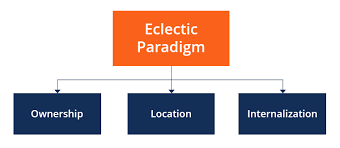Get a Custom Essay Paper that meets your expectations by clicking ORDER
Strategic Marketing Critical Analysis
Order Instructions:
CRITICALLY EVALUATE an organization on how it has approached entering international markets from a strategic marketing and a marketing mix perspective. How they adopt into marketing mix and what can they do next and is it worth doing it?
Use only academic journal for reference, 2 or 3 book reference are allowed.
Strategic Marketing Critical Analysis
Below is a partial answer to the above homework questions by one of our writers. If you are interested in a custom non plagiarized top quality answer, click order now to place your order.
Strategic Marketing Critical Analysis
Introduction
The generation of strategic marketing tactics by a business entity is critical towards their performance in the market. This is even more critical for a company operating, or willing to operate in the global and international market. Such a firm may require higher and additional marketing strategies not only to enter the market but also to continue successful operations. This paper focuses on the evaluation of various marketing strategies used by a company entering the international market, as viewed from a strategic marketing and marketing mix perspective.
Organisation of choice
To evaluate the best approach to international marketing, it is necessary to select a firm that has had measurable success in their global marketing strategies. The firm of choice for this paper is The Coca Cola Company. The company has, arguably, the most widespread global reach of any company known. While tasked with having a first mover advantage over other firms, in the beginning, this advantage was largely unintentional since the product was radically different from what is manufactured today (Golder & Tellis, 1993, pp. 166 – 167).
The company has changed their marketing strategies over the years and one of the changes has been the intentional first mover advantage on various markets, as well as directed efforts towards being the major and in some instances the only market dominator.
Entering international markets
Over the years of operation, The Coca Cola Company has entered into various international markets over different periods. The firm has used different tactics and market entry strategies for entry into each new market. The tactics used by the firm may be viewed from two broad perspectives: strategic marketing and marketing mix. Below is a discussion of these two viewpoints.
Strategic marketing perspective
From a strategic marketing perspective, the Coca Cola Company has used a number of different tactics to achieve the immense growth levels. Among the most widespread and arguably the most profitable of these is the use of the strong brand presence held by the company. Coca Cola has grown their brand to be among the most recognizable identities globally. This extensive public knowledge of the brand and associated products has been instrumental in pushing for an additional market share in international markets as well as the uptake of the other lesser known and newer products offered by the company.
Brand loyalty to the firm has seen the company through entry of new markets leading to gaining of sizeable market share for its major products (Slater, 2001). The company strategically uses the presently available strengths to penetrate international markets as a tactical move over its competitors. This is a prime example of strategic marketing efforts by the multinational.
Localization is yet another strategy employed by the Coca Cola Company as a tactic to penetrate international markets. Several researchers have identified the effective use of localization by the firm (Boisot & Child, 1999; Arnold & Quelch, 1998; Vonhonacker, 1997). A case in point was the firm’s strategy of market entry into China. Owing to tight control over international business operations by the Chinese government, Coca Cola decided to collaborate with local companies.
This move maintained good relationships between the firm and the government and fostered the growth of the smaller companies. For the Coca Cola Company, while timing and firm size and resource availability were central to the success in these emerging markets, a successful market entry strategy was vital to their success (Johnson & Tellis, 2008, pp. 3 – 5).
The Coca Cola Company uses strategic advantage to market its products in a bid to gain market entry in various regions. A case in point is in China, where before the entry of Coca Cola through their beverage and bottling divisions, the firm was operating as a partner in concrete manufacture and distribution (Vonhonacker, 1997). Once the firm decided to enter the bottling and beverage distribution market in the region, Coca Cola used the existing leverage they had in terms of networks and invested resources to help market their products.
In addition, they understood the market, albeit from a different perspective. Such a strategy allowed for better-integrated marketing that responded to supply-driven considerations and consumer preferences (Schuiling & Kapferer, 2004, pp. 98 – 99)…..
Strategic Marketing Critical Analysis
Get a Custom Essay Paper that meets your expectations by clicking ORDER









